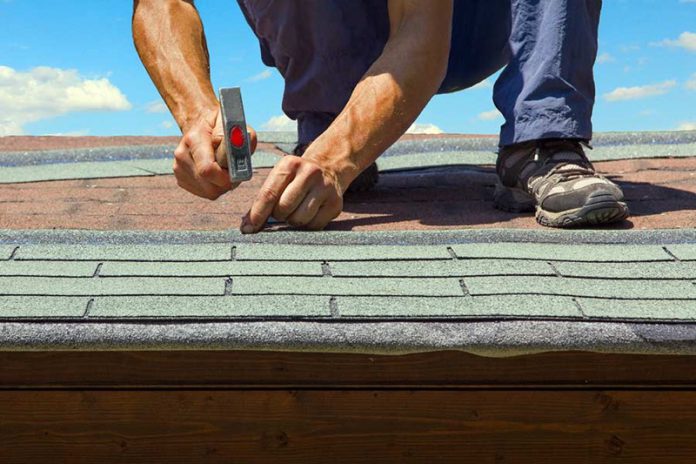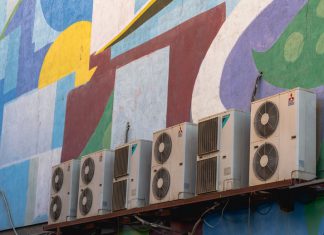The roof protects the house and everything it hosts. Precision is required during its installation. So, a lot of movement takes place, making it quite dangerous to chill around the area as contractors work on completing the project.
Accidents can happen at any time, but these can be avoided according to Blue Collar Roofing in South Jordan, Ut. Some of the dangers that you can avoid during roofing installation include:
1. Falling Objects
It is a common danger that happens at any construction site. Materials and tools contractors are working with can slip and fall on the ground. That is why professional contractors put caution signs to warn people of such instances.
Some of the falling objects are heavy, and if such lands on you, severe injuries, and sometimes, death occur.
2. Electrocution
If you are a DIY roof installer, you should look out for the electrical wiring. When cut and the ends left exposed, they can cause electrocution. So, if you are replacing an old roof, consider looking at where the electrical line passes through. If you accidentally cut the wires, ensure you have covered them using electrical tape.
If the cut wire carries a high current, say 50Amp, it is enough to stop your heart instantly. Also, if the current is not that much, it can shock and throw you from the roof to the ground.
3. Trees
Some trees overgrow, making it challenging for the contractors to work on your roof because they have spread their branches all over. To allow the project to kick off, trimming some branches becomes unavoidable. It should be done carefully while directing the branches away from the roof.
Sometimes, the branches do not fall away from the house as expected. Instead, they fall on the roofs, creating more damage than initially was.
4. Cuts and Infections
When the work is still in progress, you should be careful where you step. Some of the roofing materials that fall during installation are sharp and can cause deep cuts when stepped on. If not properly treated, these cuts can become infected within a few hours or days.
5. Ladders or Equipment Breaking
If you are a DIYer, it is possible that you use your metal ladder rungs and roofing equipment after a long period. Some of these may not be in good condition. If you had not adequately stored them, they might have become weak.
Before using them, consider checking their conditions. Otherwise, your ladder can break when you are at a significant height enough to break your bones.
6. Falls
These can happen because of different reasons. Although they also happen to professional contractors, they are negligible. DIYers experience the most falls. When a roof is too sloppy, you can lack balance and come flying to the ground.
Poor weather and lack of proper equipment can also make the roof slippery, and falling occurs. These falls can be fatal.
7. Bad Weather
When contractors are working on your roof, they do not stop to ensure your property is left exposed. Weather can get worse as they work, making it unconducive for work. Hailstones and storms are dangerous and can lead to death in extreme cases.
8. Plantar Fasciitis
Contractors and DIYers frequently working on the roofs are at a high risk of getting plantar fasciitis. They add too much pressure on their feet as they carry the roofing materials on the sloped roofs.
Plantar fasciitis causes discomfort and can make a person change their walking style as they try to get away from pain. When left untreated, the disease can become chronic and have a long-term effect on a person’s lifestyle.
9. Rodents
Birds and rodents can cause distractions to contractors and DIYers as they install the roof. If a roof is kept in poor condition, rodents find habitats in them as birds come to search for food. These can be a nuisance, making the installers lose focus and hurt themselves with their working equipment.
Construction works come with their challenges. When you have a roof installation project, you should know potential dangers during installation. These can be avoided, for example, by checking the weather before scheduling an installation. Checking the condition of the working tools is also another way of avoiding dangers.















